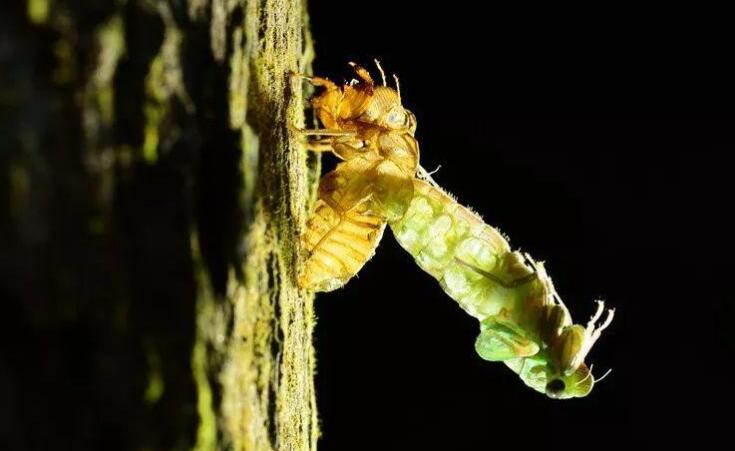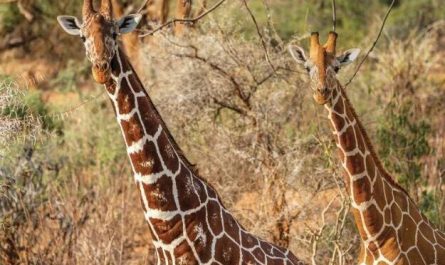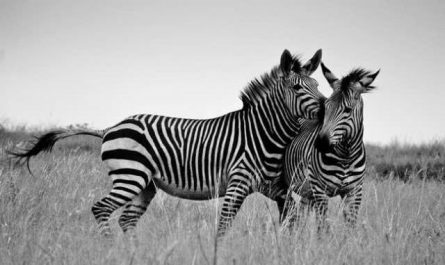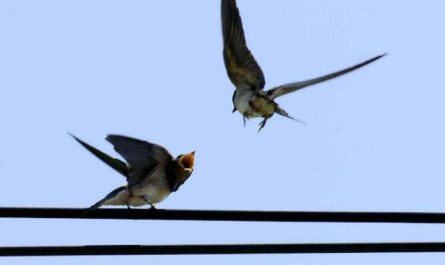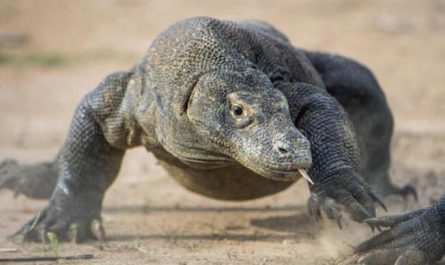The development process of insects has to go through several molting reasons
In fact, all arthropods need to molt several times before they can grow up. This is due to the exoskeleton of arthropods. The exoskeleton (chitin as the main component) secreted by the epidermal cells cannot continue to expand after hardening. As a result, the growth of insects is restricted. Therefore, arthropods will shed their skin during the growth and development process.
When molting, the epidermal cells secrete an enzyme to dissolve the chitin, and at the same time the waxy layer is broken, the larvae can drill out of the exoskeleton, and the exoskeleton is secreted by the epidermal cells again. When the new exoskeleton is not complete Before hardening, its body can enlarge. Therefore, the developing and rapidly growing arthropod larvae shed more often. When it grows to no longer grow up, the molting stops.
Some insects have exoskeletons and need to shed their skins to grow up. For example, locusts have exoskeletons on their bodies, which can protect and support the soft organs in the body. They can also prevent the loss of water in the body. The exoskeletons cannot grow as the body grows. , So there will be molting phenomenon, from the nymph to the adult shed a total of 5 times to develop into an adult. But not all insects need molting, such as bees, silkworms, etc. do not need molting.
Growth and life of insects
Temperature is the most important factor that determines the growth and development rate of insects. Climate warming can accelerate the development of various insect states, leading to earlier emergence, migration, and population peak periods. Land insects look for a cool and humid place when the environment is too hot. If exposed to the sun, it puts itself in the position where the heated area of the body is the smallest. If it is too cold, insects stay in the sun to keep warm. Many butterflies spread their wings to collect heat before flying. The moth shakes its wings or shakes its body before flying, and uses hair or scales to form an air insulation layer around the body to keep body heat. The most suitable muscle temperature for flying is 38-40°C (100-104°F). In severe cold, freezing of the body is the greatest danger to insects.
The species that can survive winter in cold regions are called hardy insects. A few insects can tolerate ice crystals in the body fluid, but in this case the cell contents may not have frozen. But the cold tolerance of most insects means preventing freezing. The antifreeze effect is partly due to the accumulation of a large amount of glycerin as an antifreeze; partly due to the physical changes in the blood, the temperature is far below the freezing point and still does not freeze. Drought prevention includes hard waterproof wax and a mechanism to expand water storage.
In addition to the significant changes in walking and feet that make aquatic insects suitable for swimming, the main adaptive change is breathing. Some rise to the surface to breathe. Mosquitoes only use the last pair of abdominal air holes at the end of the breathing tube to inhale. The dragon louse has an air chamber between the elytra and the abdomen.
Air-breathing insects form an air layer between the hairs on the body surface, acting like gills, enabling it to obtain air from the water and prolong the diving time. Insect larvae in the water get their gas directly from the water. Chironomid larvae have abundant trachea throughout the epidermis. Trichoptera and Ephemeroptera larvae have tracheal gills. The gills of the large dragonfly larvae are in the rectum, and water enters and exits the anus to provide oxygen.
There are so many kinds of insects, therefore, their lifestyles and places of living must be diverse, and the lifestyles and life instincts of some insects are of great research value. For example, insects are easy to invade and colonize areas with similar climate and environment. It can be said that from the end of the world to the sea, from the mountains to the abyss, from the equator to the poles, from the ocean and rivers to the desert, from the grass to the forest, from the wild to the interior, from the sky to the soil, there are insects everywhere. However, it should be distinguished by the most suitable venues for the main insect states, which can be roughly divided into five categories.
